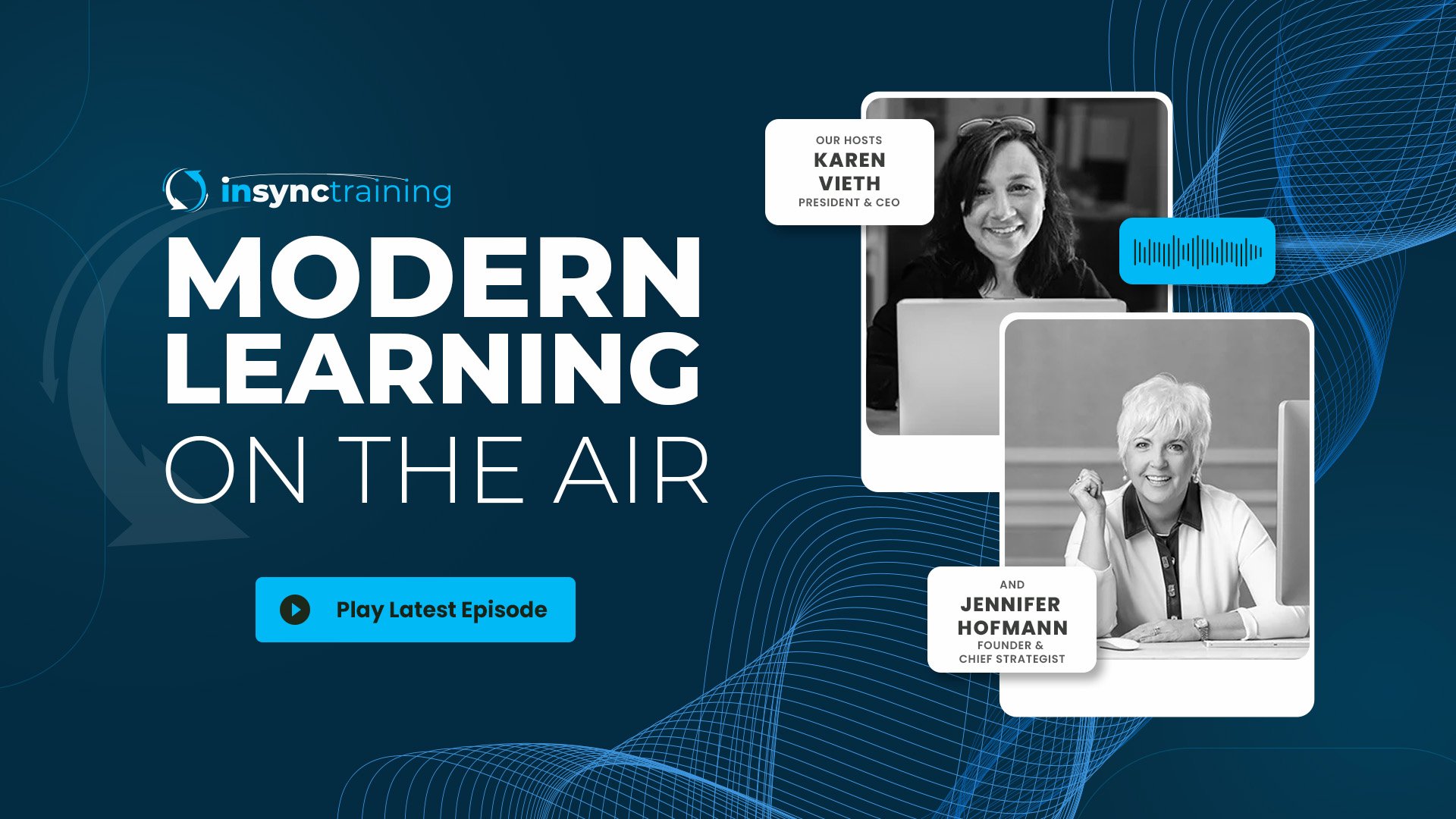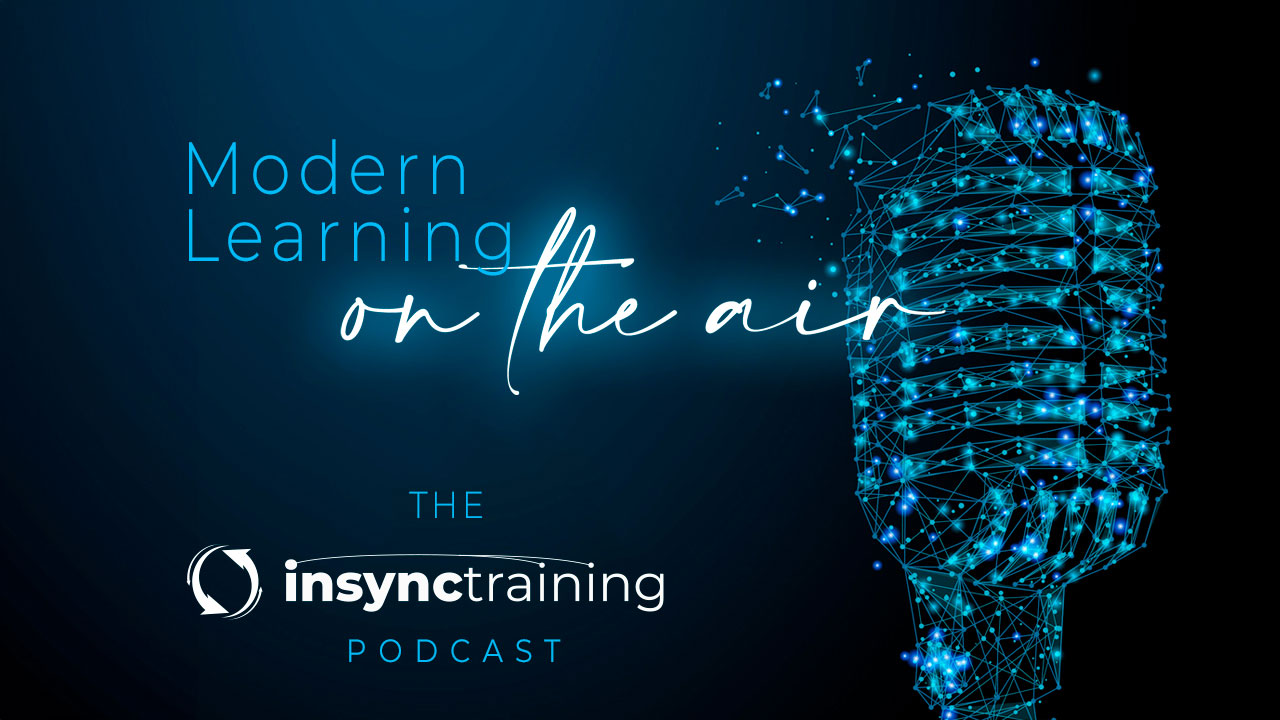Making Hybrid Work
The hybrid work model has been increasing in adoption since the pandemic. The analysis of thousands of tasks and jobs across multiple countries...
4 min read
InSync Training : Aug 2, 2022 6:58:57 AM

Nearly 70 million Americans quit their job over the past year, and 4.4 million of those people quit in April 2022. According to Gallup, only 12% of employees believe their organization does a great job onboarding new employees. That means up to 88% of employees are unhappy with their onboarding experience. The truth is a strong onboarding strategy retains talent. With the increase in today's remote workforce - how do you get virtual onboarding right to ensure you are retaining talent?
 We asked Stephen Otterstrom, Senior Professional in Human Resources (SPHR) and onboarding expert to share his insights into this critical issue. We are so glad we did!
We asked Stephen Otterstrom, Senior Professional in Human Resources (SPHR) and onboarding expert to share his insights into this critical issue. We are so glad we did!
This interview has been edited for clarity.
Nearly 20 years ago I eagerly took my first job in the training department of the organization I had been working for. In my first class of new hires I discovered a unique energy comprised of excitement, anxiety, optimism and skepticism. I soon learned that this energy is the human engagement version of nuclear power. Some new hire groups energized the teams they joined with new perspectives, resolve and comradery, while others had more the nuclear meltdown version of this analogy.
Sitting down with a calculator and a calendar I estimate I have overseen nearly 500 onboarding programs. In that time, I have learned some hard truths. Some things work, others do not, and shortcuts do not pay off when it comes to onboarding.
There are many things employees want to know, but the most pressing is that they need to be assured that they made the right decision. There is so much anxiety around a job or career change. New hires need to know that they are coming into an organization where they can belong. They need to see a little bit of themselves in the organization they are joining.
Onboarding needs to feel personal and not be just a corporate initiation. Most people learn to dread the process because it often consists of hour after hour of impersonal policies and procedures. Often, content is delivered via eLearning modules that are painfully dull and feel condescending. The employee generally leaves with the impression that this portion of the onboarding is only there because the organization is trying to limit liability. Employee engagement is not a priority. Setting role expectations is not a priority.
My key point is: employees need to know what is expected of them: what does success look like and how will it be measured? When this information is lacking, anxiety is the likely result.
Additionally, employees need to connect to a safe person and reliable resources. They will have a variety of questions, and they need to feel they can get answers in a safe environment. They need to connect to a non-judgmental individual to get their questions answered.
Employers want new employees who can function independently within the corporate culture. They want to utilize new talent, perspectives, and energy. They want to see that the new employee is committed to the success of the organization and the organization’s mission.
Employers want the benefits of integrated independent new hires, but do not want to overly-invest valuable resources to do so. This is why so many organizations have gone the initiation/fire-hose route of putting all the information in a handbook or eLearning and asking the new hire to onboard themselves.
This is a wasted opportunity, and will likely not meet anyone's needs, including the employee, the supervisor, or the organization.
Onboarding is the first opportunity for employers to truly engage employees. Keeping costs minimized, while always a factor, should not be the leading priority.
Great question. This is where skilled facilitation comes in. Anyone could share the procedures for open heart surgery, but it would be best if the conversation was led by a skilled heart surgeon. The entire experience needs to be facilitated by training leaders and supported by the supervisors of the new-hires.
Remember, onboarding is not a singular event. It is a series of learning experiences, that include a number of different activities. Hybrid learning does not need to be a challenge- it is a reality that should be anticipated. For orientation meetings, in a hybrid environment, activities should be planned that allow all participants to connect with each other regardless of where they are sitting. Networking should be funneled through a shared channel. For example, individuals can access polls through their phones or shared IM channels.
Social integration is key. If, after 30 days, new hires do not feel socially integrated, they will be looking for the exit. This can seem daunting in the remote and hybrid work environment; however, it is very achievable. Regular virtual events and in-person interactions (when feasible) can make a huge difference. I had one job where I was hired as the only remote worker on the team. The company flew me out for three days just to jump start the relationship that I would need to maintain virtually. The key is investment. If an organization has not invested in an employee in their first 30 days they can hardly expect a return on that (lack of) investment.
Of course, travel may not be an option. There are many other ways to make the initial, successful investment in employee engagement, and each will require a human touch.
The answer is a blend! Include, at very least:
Formal live Virtual Training
Infographics
Microlearning
Networking
You need all of these approaches and a plan to tie them together. The plan is the blend! The age old, “failure to plan, is a plan to fail” is very true to onboarding. New hires need a detailed path that allows them to see where they are and what is expected of them. They also need time to complete the plan. Too often, the needs of the organization start crushing the new hire before they can complete their onboarding. Onboarding requires time. Management needs to actively ensure that the new hire is not receiving so much work they cannot focus on onboarding.
Find out how your organization can build a strong onboarding strategy to retain talent in today's hybrid workplace. Getting Virtual Onboarding Right - Maximizing New Hire Engagement in the Hybrid Workplace explores how to design a virtual onboarding program, how to connect remote new hires to the rest of the organization, and how to make the first 30 days on the job positive, memorable, and energizing.

The hybrid work model has been increasing in adoption since the pandemic. The analysis of thousands of tasks and jobs across multiple countries...

Imagine that you are getting ready to start a new job on Monday. You’re thinking about your new role, the types of challenges it will bring, and...

Transcript: A Conversation with Jennifer Hofmann and Karen Vieth Tune into the InSync Podcast where Karen Vieth, the Vice President of Virtual...